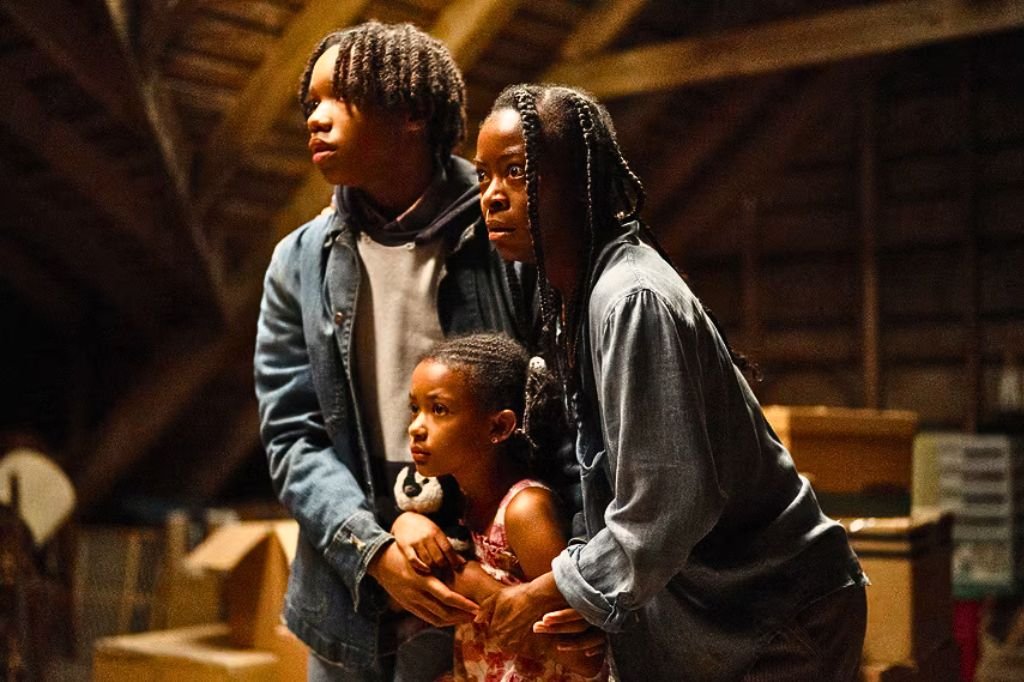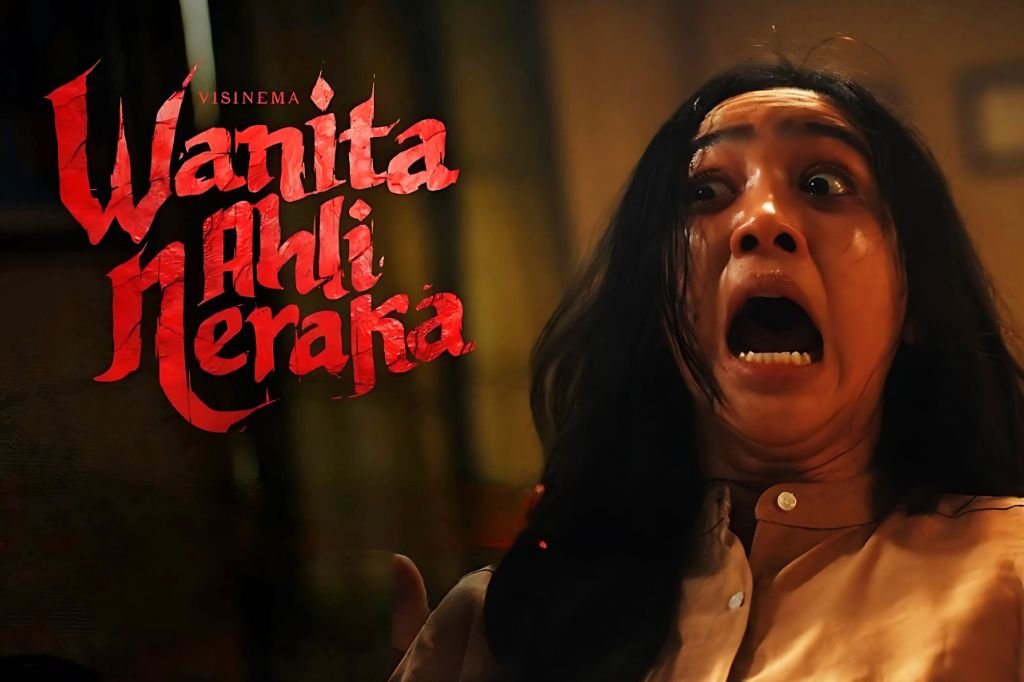Now Reading: The Woman in the Yard (2025) Movie Review
-
01
The Woman in the Yard (2025) Movie Review
The Woman in the Yard (2025) Movie Review

Blumhouse Productions’ latest offering, The Woman in the Yard (2025), has sparked fervent debate among horror enthusiasts. Directed by Jaume Collet-Serra (Orphan, House of Wax) and starring Danielle Deadwyler (Till, The Harder They Fall) in a gripping lead role, this atmospheric thriller plunges viewers into a bleak world of grief, isolation, and unsettling dread. With its stark visuals and polarizing narrative, The Woman in the Yard is a film that lingers long after the credits roll—though not always for reasons audiences might expect.
Table of Contents
A Simple Setup with Haunting Execution
The Woman in the Yard follows Ramona (Danielle Deadwyler), a recently widowed mother struggling to care for her two children on their remote farm. Still reeling from her husband’s tragic death in a car accident—an event that left her physically injured and emotionally shattered—Ramona’s fragile world collapses further when a mysterious woman cloaked in a black veil (Okwui Okpokwasili) begins appearing in their yard. Silent and unmoving, the figure inches closer to the house each day, her presence escalating from unnerving to terrifying.
The film’s stripped-down premise hinges on this slow-burn tension, relying heavily on atmosphere rather than jump scares. As Ramona grapples with her grief, the titular woman becomes a manifestation of her inner turmoil, blurring the lines between reality and hallucination.
Visual Mastery: Shadows and Symbolism

Jaume Collet-Serra’s direction is a standout element of The Woman in the Yard. Known for his flair in thrillers like The Shallows and Run All Night, Collet-Serra employs shadows and lighting to masterful effect. Scenes where the family boards up windows to block sunlight—and the creeping shadows that enable the veiled woman’s supernatural influence—are visually striking. Dream sequences transition seamlessly into reality, such as shattered glass dissolving mid-air, amplifying the film’s surreal tone.
The isolated farmhouse setting, rendered with meticulous production design, reinforces the story’s claustrophobia. Natural light filters through dusty windows, casting elongated shadows that mirror Ramona’s fractured psyche. Okpokwasili’s chilling performance as the Woman is enhanced by her ghostly movements; she glides through frames like a specter, her raspy voice and unnerving stillness leaving audiences on edge.
Danielle Deadwyler Anchors the Film
Deadwyler’s portrayal of Ramona is nothing short of mesmerizing. She embodies the emotional spectrum of a grieving mother—from denial to rage to numb despair. Her performance carries the film, especially since much of the narrative weight rests on her shoulders. With minimal cast support, Deadwyler maintains the intensity and emotional pull, making the viewer feel every ounce of Ramona’s grief.
The Woman in the Yard – A Haunting Metaphor for Mental Struggle
(Spoiler-Free Discussion) The Woman in the Yard is not just a literal presence—it is metaphorical. The film slowly reveals that this mysterious figure is the physical manifestation of Ramona’s grief and suicidal ideation. This theme begins to crystallize when the woman tells Ramona that her daily prayer for “strength to go on” is actually a prayer for strength to end her life.
What begins as a horror tale morphs into a chilling psychological allegory. The film suggests, disturbingly, that the way to peace is through self-destruction—a message that has sparked controversy among viewers. This twist arrives in the final act, as Ramona seemingly merges with the woman in the yard and prepares to take her own life.
Why The Woman in the Yard Will Divide Horror Fans
Without giving away every spoiler, the film’s ending is perhaps its most divisive element. After a brief moment of hope—when it appears Ramona has resisted the urge to end her life and reconciled with her children—the film pulls a devastating twist. A subtle visual clue (her name written backward on a painting, signaling the “mirror reality”) implies that she did, in fact, go through with the act. The earlier hopeful sequence was likely imagined, a post-death purgatory or hallucination.
This ending left many viewers stunned. Some, like YouTuber Cody Leach, felt “physically nauseous” and “pissed off,” viewing it as an irresponsible and bleak message, especially for those struggling with mental health. Others praised the film’s bravery for going to such a dark place, arguing that it effectively conveys the consuming nature of grief.
The Pros and Cons
What Works:
- Outstanding Performances: Danielle Deadwyler delivers a powerhouse portrayal full of emotional nuance.
- Atmosphere and Visuals: Masterful use of light, shadow, and surreal transitions.
- Unsettling Symbolism: The woman in black is an eerie presence that lingers long after the credits roll.
- Coherent Directorial Vision: Unlike many recent Blumhouse offerings, this film feels purposeful and complete.
What Falters:
- Pacing Issues: The middle act drags, with repetitive scenes of the woman simply sitting in the yard.
- Bleak Messaging: The final thematic takeaway has been criticized for promoting a dangerously negative message.
- Character Connection: Besides the young daughter, many found the family dynamics unpleasant and hard to empathize with.
Final Thoughts on The Woman in the Yard
The Woman in the Yard is not a film for the faint of heart. It’s harrowing, painful, and deeply disturbing—not in the traditional horror sense, but emotionally and psychologically. It succeeds in creating dread and discomfort, but what it chooses to say with that power is what divides audiences.
Some may appreciate its unflinching dive into grief and mental health, while others may find its conclusions unforgivable. Regardless of which side you fall on, one thing is clear—The Woman in the Yard will leave a lasting impression.
If you’re searching for a horror movie that goes beyond jump scares and into the realm of emotional horror, this might be for you. Just don’t expect comfort. Expect to feel something—and maybe not something pleasant.
The Woman in the Yard isn’t just a horror movie—it’s a metaphorical reckoning. Whether it’s your cup of tea or not, it’s a film that demands to be discussed. Have you seen The Woman in the Yard? Share your thoughts below.

























